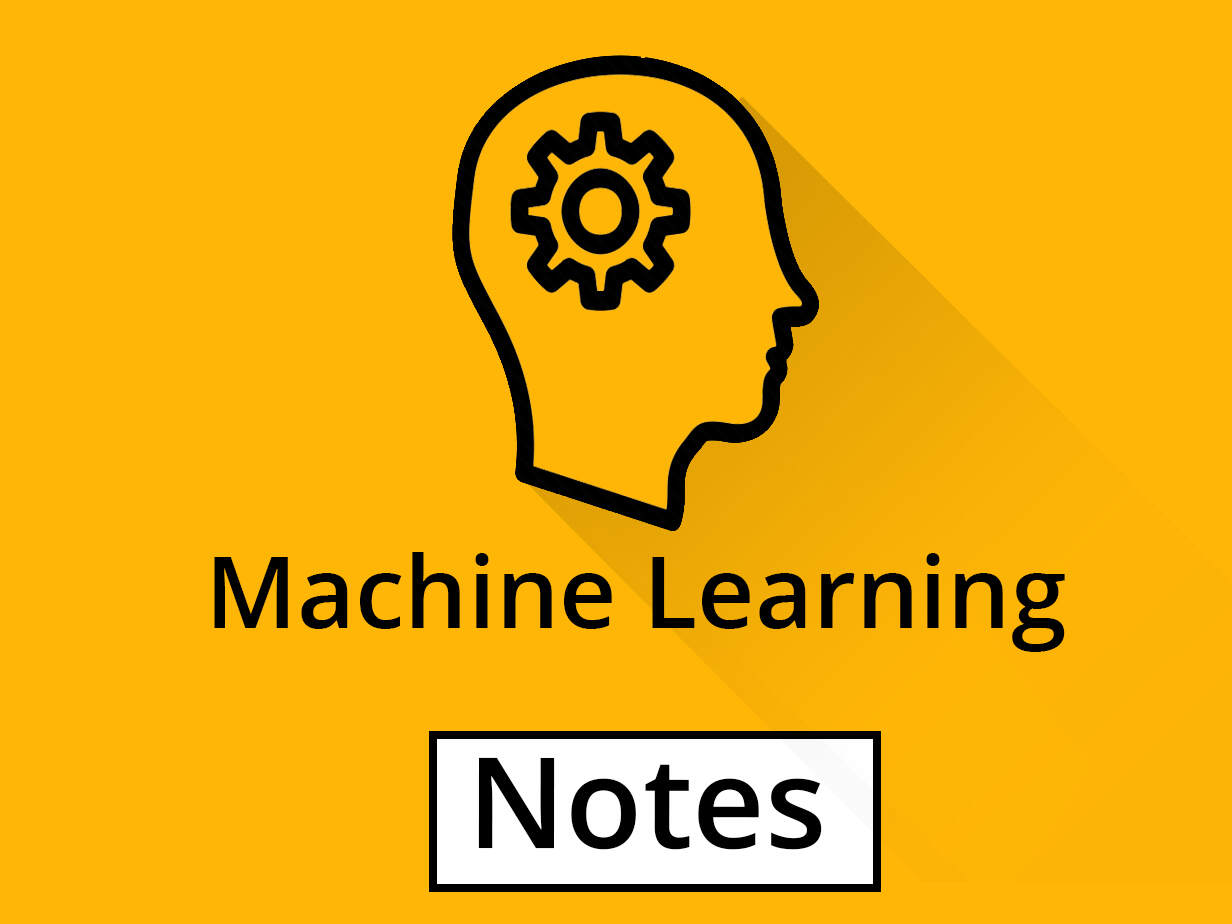Machine Learning Notes
₹200.00

-
Machine Learning Notes
Machine Learning Notes
Machine Learning is the semester 6 subject of the final year of computer engineering in Mumbai University. Prerequisites for studying this subject is Data Structures, Basic Probability, and Statistics, Algorithms.
Module Introduction to Machine Learning consists of the following subtopics, Types of Machine Learning, Issues in Machine Learning, Application of Machine Learning, and Steps in developing a Machine Learning Application. Module Introduction to Neural Network Introduction consists of the following subtopics Fundamental concept Evolution of Neural Networks Biological Neuron, Artificial Neural Networks, NN architecture, Activation functions, McCulloch-Pitts Model. Machine learning (ML) is the study of computer algorithms that improve automatically through experience. It is seen as a part of artificial intelligence. Machine learning algorithms build a model based on sample data, known as “training data”, in order to make predictions or decisions without being explicitly programmed to do so. Machine learning algorithms are used in a wide variety of applications, such as email filtering and computer vision, where it is difficult or unfeasible to develop conventional algorithms to perform the needed tasks.
Machine learning is a method of data analysis that automates analytical model building. It is a branch of artificial intelligence based on the idea that systems can learn from data, identify patterns and make decisions with minimal human intervention. Supervised learning. In this type of machine learning, data scientists supply algorithms with labeled training data and define the variables they want the algorithm to assess for correlations. Both the input and the output of the algorithm is specified. Unsupervised learning. This type of machine learning involves algorithms that train on unlabeled data. The algorithm scans through data sets looking for any meaningful connection. Both the data algorithms train on and the predictions or recommendations they output are predetermined. Semi-supervised learning in this approach to machine learning involves a mix of the two preceding types. Data scientists may feed an algorithm mostly labeled training data, but the model is free to explore the data on its own and develop its own understanding of the data set. Reinforcement learning is typically used to teach a machine to complete a multi-step process for which there are clearly defined rules. Data scientists program an algorithm to complete a task and give it positive or negative cues as it works out how to complete a task. But for the most part, the algorithm decides on its own what steps to take along the way.
Module Introduction to Optimization Techniques consists of the following subtopics Derivative based optimization- Steepest Descent, Newton method. Derivative free optimization- Random Search, Down Hill Simplex. Learning with Regression and trees learning with Regression Linear Regression, Logistic Regression. Learning with Trees: Decision Trees, Constructing Decision Trees using Gini Index, Classification and Regression Trees (CART). Module Learning with Classification and clustering consists of the following subtopics Classification consists of Rule based classification, classification by Bayesian Belief networks, Hidden Markov Models. Support Vector Machine: Maximum Margin Linear Separators, Quadratic Programming solution to finding maximum margin separators, Kernels for learning non-linear functions. Clustering consists of Expectation Maximization Algorithm, Supervised learning after clustering, Radial Basis functions. Dimensionality Reduction consists of Dimensionality Reduction Techniques, Principal Component Analysis, Independent Component Analysis, Single value decomposition.
Suggested Texts Books for machine learning by Mumbai University are as follows Peter Harrington Machine learning in Action, DreamTech Press. Ethem Alpaydın, Introduction to Machine Learning, MIT Press,Tom M.Mitche Machine Learning McGraw Hill,Stephen Marsland, Machine learning an Algorithmic Perspective CRC Press. J.-S.R.Jang “Neuro-Fuzzy and Soft Computing” PHI 2003, Samir Roy and Chakraborty, Introduction to soft computing, Pearson Edition,Kevin P. Murphy, Machine Learning A Probabilistic Perspective. Suggested Reference Books for machine learning by Mumbai University are as follows Han Kamber, Data Mining Concepts and Techniques, Morgann Kaufmann Publishers, Margaret.H.Dunham, Data Mining Introductory and Advanced Topics, Pearson Education. Objectives of Course machine learning is to introduce students to the basic concepts and techniques of Machine Learning. To become familiar with regression methods, classification methods, clustering methods. To become familiar with Dimensionality reduction Techniques. Outcomes of Course machine learning is Students will be able to Gain knowledge about basic concepts of Machine Learning Identify machine learning techniques suitable for a given problem. Solve the problems using various machine learning techniques. Apply Dimensionality reduction techniques. Design application using machine learning techniques.
Prepare For Your Placements: https://lastmomenttuitions.com/courses/placement-preparation/
![]()
/ Youtube Channel: https://www.youtube.com/channel/UCGFNZxMqKLsqWERX_N2f08Q
Follow For Latest Updates, Study Tips & More Content!
Course Features
- Lectures 9
- Quizzes 0
- Skill level All levels
- Language English
- Students 53
- Certificate No
- Assessments Yes


![VIVA QUESTION Protected: Wipro Elite /WILP Complete Prep Courses [ Videos + Notes + Mock ]](https://lastmomenttuitions.com/wp-content/uploads/2019/08/VIVA-QUESTION-450x450.png)
![WhatsApp Image 2020-06-26 at 12.15.44 PM First Year Sem 2 MU NEP [ Comps – IT – AIML Branch ]](https://lastmomenttuitions.com/wp-content/uploads/2020/02/WhatsApp-Image-2020-06-26-at-12.15.44-PM.jpeg)
![demo_image Sem-4 IT MU [ Maths 4 – CNN – OS – AT – COA ]](https://lastmomenttuitions.com/wp-content/uploads/2019/07/demo_image-450x450.jpg)